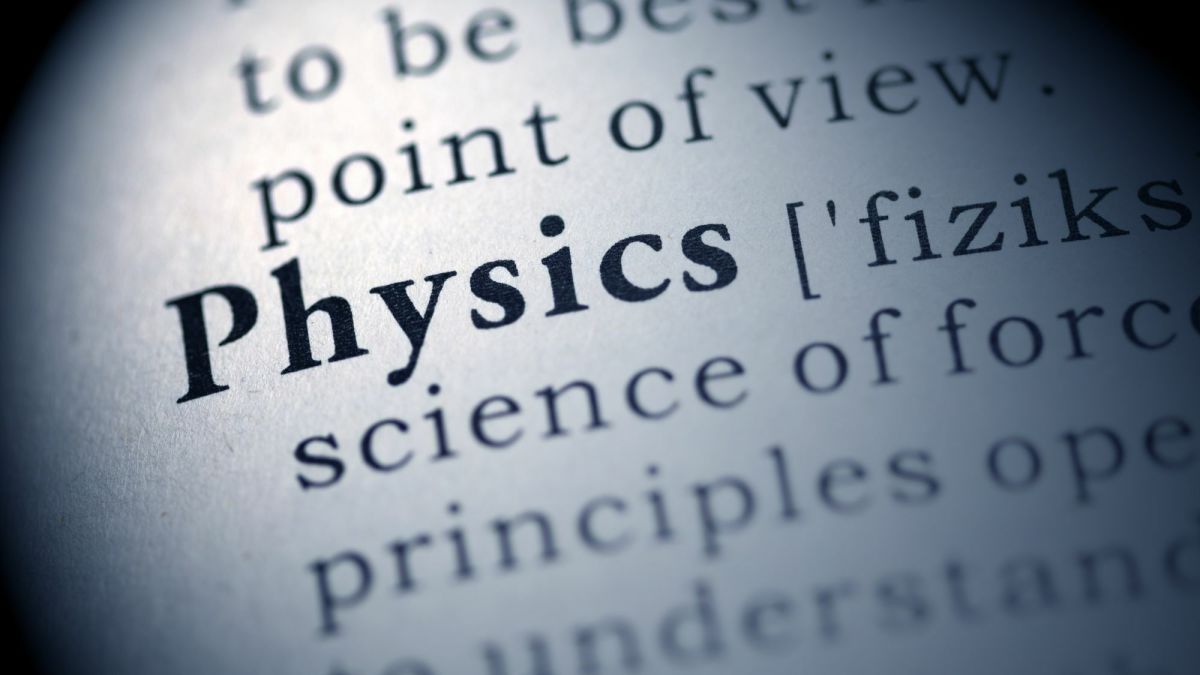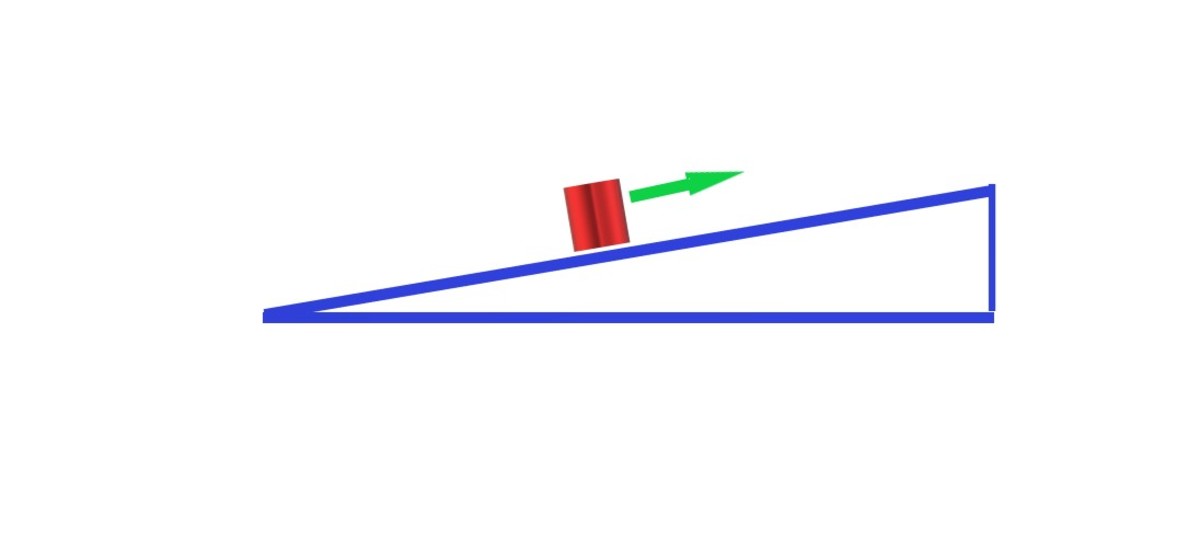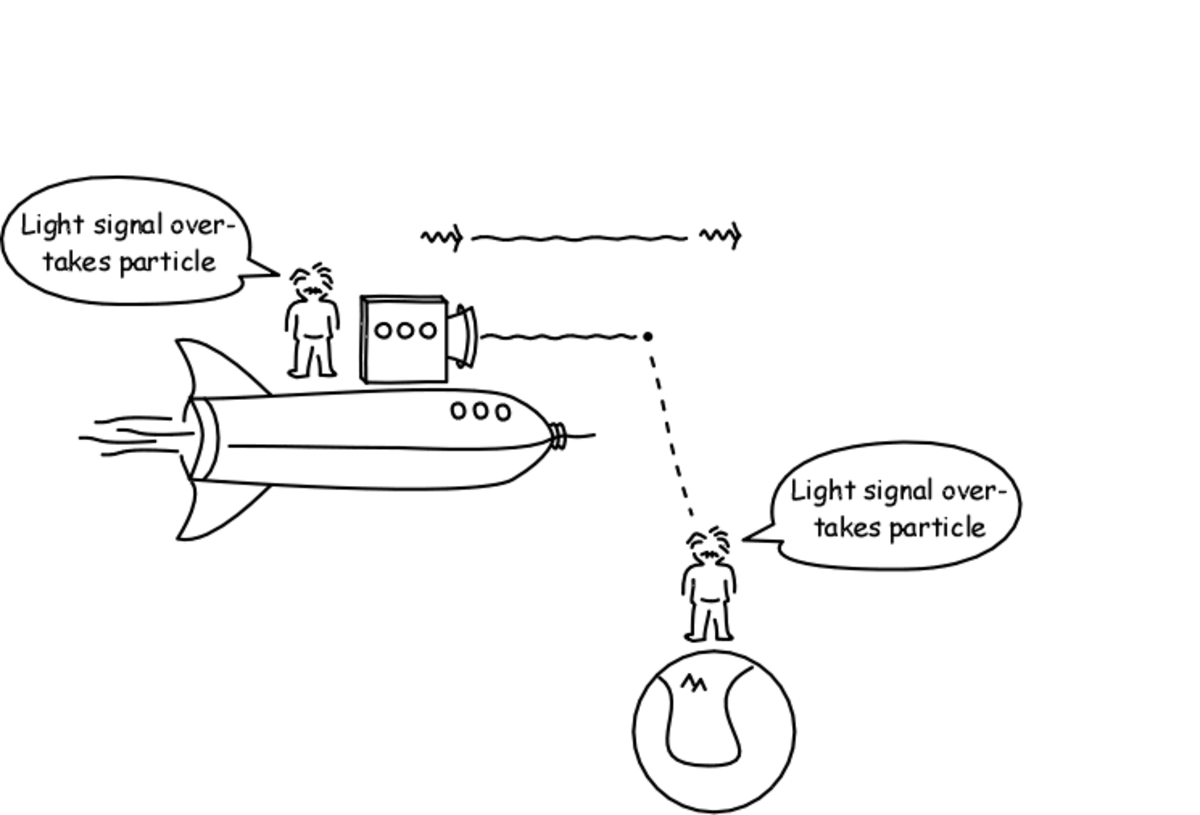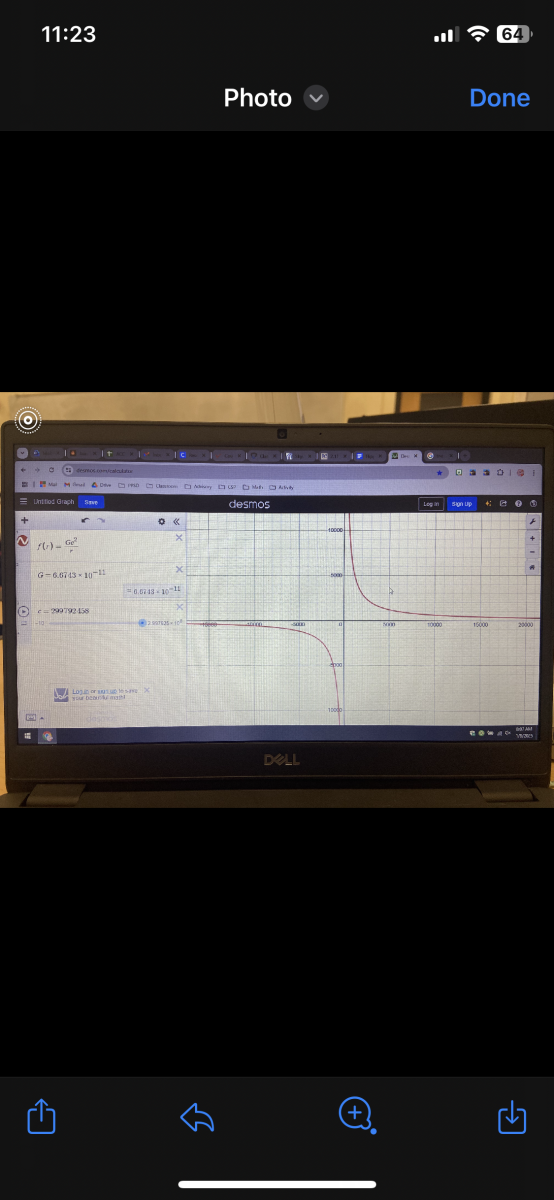Relativity indicates the possible existence of the Ether
In fig. 1, we see a spacecraft passing the earth at a constant 148,800 miles per second, 80% the speed of light. The observers on earth, see the spacecraft contracted to (1-v2/c2)1/2 = 60% its original length. The dotted outline of the spacecraft indicates its length before contraction. The observers on earth see the clocks on the vehicle are moving slower than earth clocks by 1/ (1-v2/c2)1/2 = 166.7%. The astronaut on the spacecraft sees lengths on Earth contracted to 60% their original length. He sees the clocks on the earth are moving slower than his own clocks by 166.7%. This seems very symmetrical. Both observers see the same contraction and time dilation in the other.
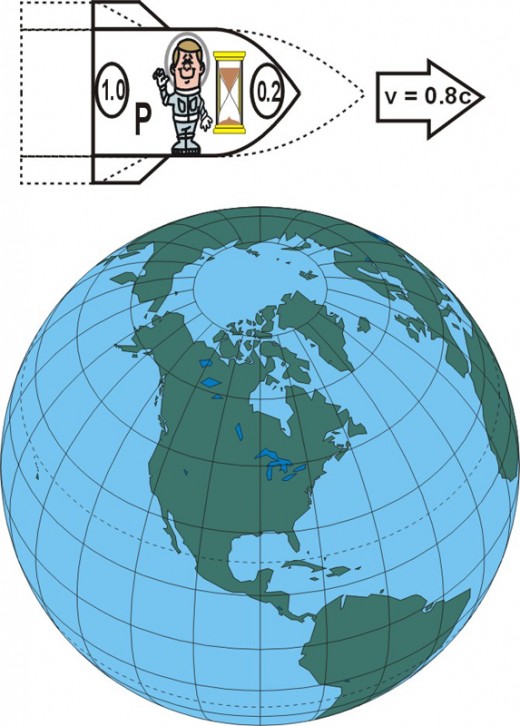
The astronaut continues on to past the moon about 250,000 miles from earth. The people on earth see that it took the astronaut 1.68 seconds (250k/148.8k = 1.68) to travel the distance between the earth and the moon. The astronaut’s clock indicates the time of travel from the earth to the moon took 1.008 seconds (1.68/1.667 = 1.008). The astronaut will calculate the distance from the earth to the moon is D = his velocity x time of travel = 148,800 x 1.008s = 150,000 miles. This matches with the amount of contraction of distance the astronaut should see, 250,000 miles times 0.6 equals 150,000 miles.
We know that the distance from the earth to the moon could not physical contract because a spacecraft is traveling that distance at any speed. There could have been 10 different spacecraft traveling from the earth to the moon at the same time at 10 different speeds. Each vehicle would see a different distance between the earth and the moon. We know that the speed of a passing vehicle will not physically slow the clocks on earth.
However, for the astronaut to time his trip from earth to the moon occurred in 1.008 seconds means that his clock is physically moving slower than the clocks on earth. This cannot be caused by his relative velocity to the earth and moon. This could only be caused by his movement through the space. If space was totally empty, there would be nothing that could cause the astronaut’s clock to move slower than the clocks on earth. What if space were filled with the ether? Ether is the medium that might support electromagnetic waves. Maybe if an object were moving through the ether its time would be slowed and its lengths in the direction of its movement would be contracted. If the astronaut’s clock were not physically slowed, he would measure that the trip took 1.68 seconds. He would calculate the distance between the earth and moon as 1.68 x 148,800 = 250,000 miles. Thus he would not see a contraction of the distance between the earth and the moon. That would be contrary to the rules of relativity.
The earth and moon are also moving through the ether. Therefore, their clocks are also slowed. But is the relative motion between the astronaut and the earth that causes the astronaut’s to move 166.7 % slower than the clocks on earth. The astronaut is moving through the ether 0.8c faster than the earth or moon. Thus relativity gives circumstantial evidence of the existence of the ether.
Since the time and space units are different between the observer on earth and the object, (astronaut) how can both systems measure the same relative speed between each other? We can use the Minkowski diagram to show there are 3 ways to measure relative speed. To do this on the diagram we will use two identical spacecraft with a relative velocity of 0.6 c.
The relative speed as measured between both systems
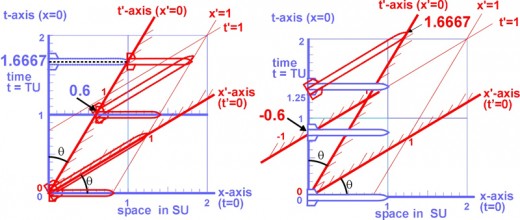
1. In fig. 2 the observer sees the tail of the object's rocket moving forward past him (to the right) for one of his time units. At the end of that time unit the object has moved 0.6 of the observer’s space units.
Likewise, in fig. 3 the object sees a point on the observer as moving backward past him (to the left) for one of his time units. At the end of that time unit the observer has moved 0.6 of the object’s space units. This tells both the observer and the object that the relative speed between them is 0.6c.
2. Or since the length of both vehicles is 1 SU, they could have measured the time it would take a point on the other vehicle to pass from one end of their vehicle to the other end, 1/1.6666 = 0.6c.
3. In fig. 4 the relative speed of the object is the measured length of the object divided by the time it takes this length to pass a point in the observer’s system using the observer's units, 0.8/1.3333 = 0.6c.
Fig. 5 shows the same in the object's system, using theobject's units. These all show the effects one observer sees in the other observer moving relative to him.
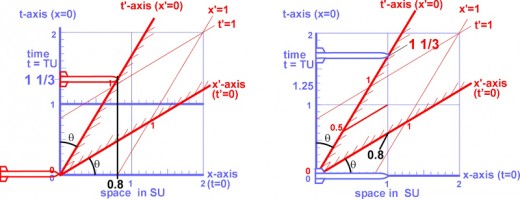
Since we know that the distance from the earth to the moon could not physical contract because a spacecraft is traveling that distance at any speed. However, for the astronaut to time his trip from earth to the moon occurred in 1.008 seconds means that his clock is physically moving slower than the clocks on earth. This cannot be caused by his relative velocity to the earth and moon. This could only be caused by his movement through the space.
In conclusion any object A moving through the ether with a constant velocity of v relative to the ether, will be physically contracted in the direction of motion by (1-v2/c2)1/2. This same object A will have its time physically dilated (slowed) by1/ (1-v2/c2)1/2. Since he is moving with a constant speed he will not be aware of his movement. The observers within A will always measure a meter as one meter and a second as one second in their own system. He will not be aware of any contraction in length or time dilation in his own system unless his system is accelerated. If this object A passes another object B with a relative velocity of u to it, it will measure an apparent contraction in the direction of motion of B by (1-u2/c2)1/2. Object A will also measure an apparent time dilation in B by 1/ (1-u2/c2)1/2.
To see how a vehicle moving through the ether will measure an apparent spatial contraction and time dilation in any other passing vehicle see my article “Relativity Measurements in Space”. To find this article click on read more hubs by lgsims96.




